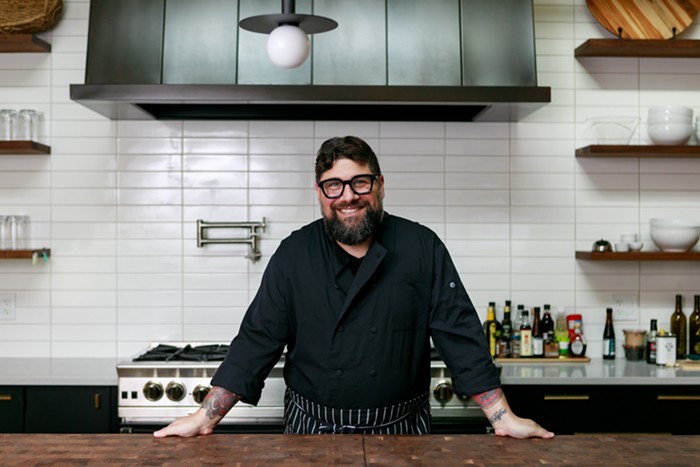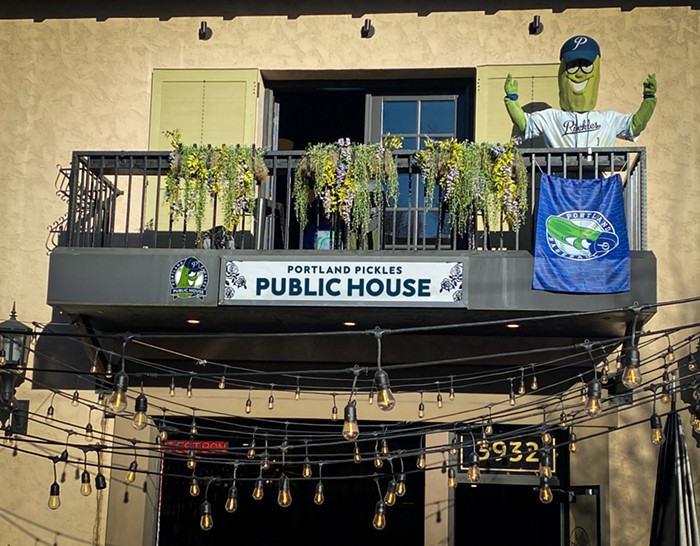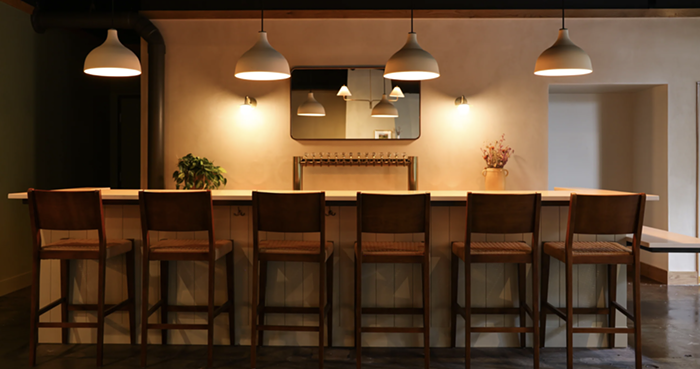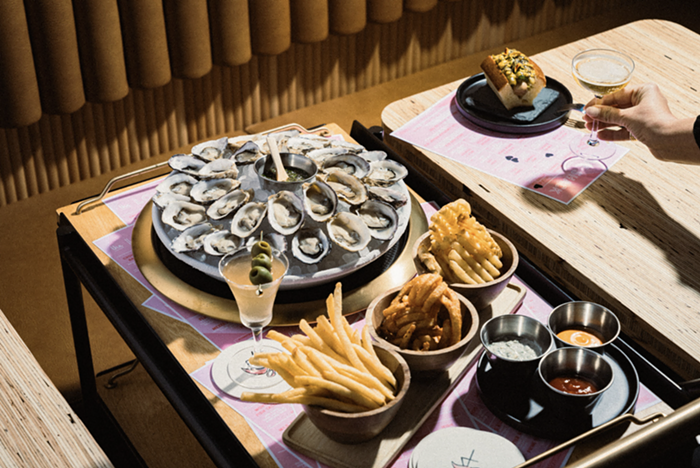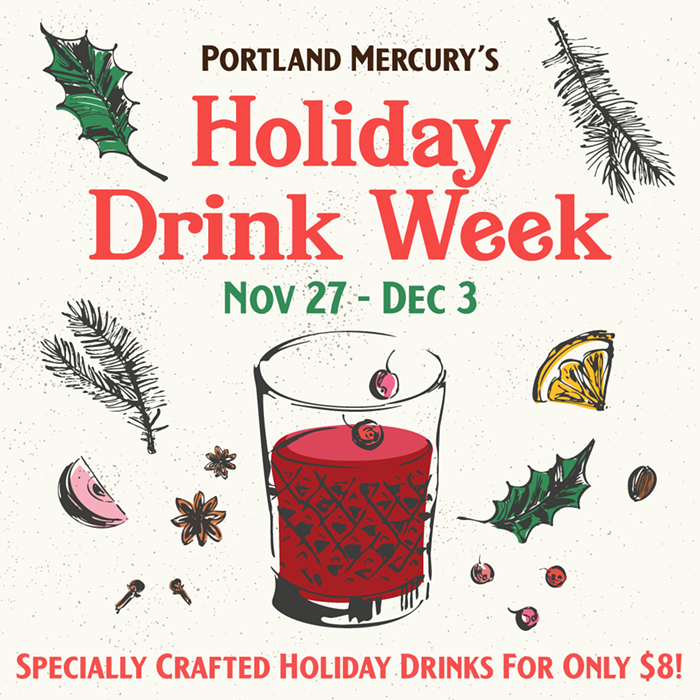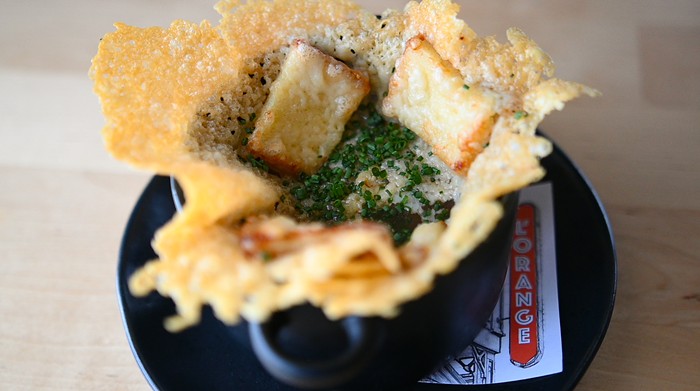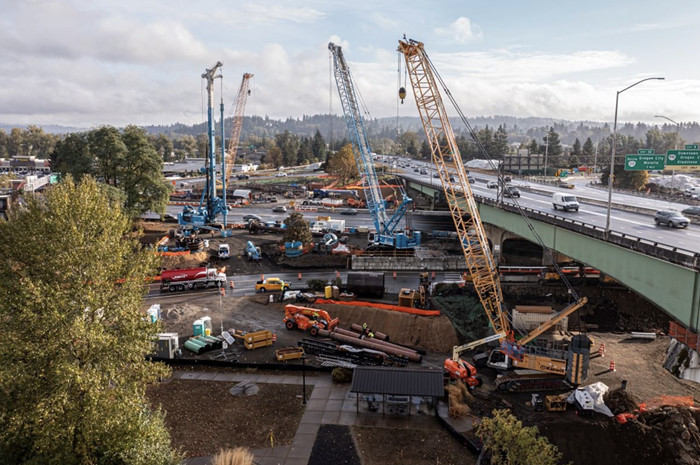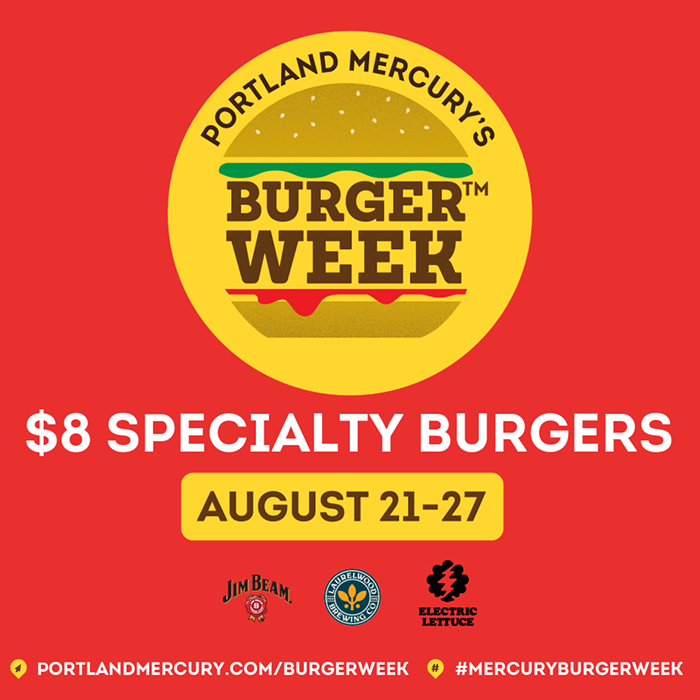
The COVID-19 pandemic has brought with it a tragic loss of life, a traumatic bonding experience, and—most annoyingly—a vocabulary lesson. Transmission. Social distancing. Asymptomatic. Herd immunity. Telehealth. The latest phrase on the tip of everyone’s tongue is “supply chain.” Supply chain issues are the reason grocery store shelves are variably empty, your pandemic-purchase couch took months to arrive, and why businesses are practically begging customers to do their holiday shopping early.
The supply chain is also to blame for food and product shortages plaguing Portland restaurants, causing buyers to abandon their best laid plans, pare down their menus, and compete for limited supplies.
“As soon as things started opening up again, it was just like the wheels were turning faster than the engine could go,” said Drew Simpson, chief operating officer of chicken wing restaurant Fire on the Mountain.
Supply chain backlogs are caused by compounding issues of COVID safety closures, worker shortages, and multi-step supply chains that predate the pandemic. According to Keaton Miller, an assistant professor of economics at the University of Oregon, the country’s current supply chain issues can be traced back to the past couple decades of supply chain optimization.
“Over time, what firms did was they specialized more and more heavily and they reduced inventories,” Miller said.
Miller explained that producers have shifted to creating products to meet demand exactly instead of creating a surplus of products in anticipation of demand. By fine-tuning the supply chain for efficiency, suppliers created a multi-step system that was contingent on each step going as planned.
Then the pandemic hit, and the fine-tuned system couldn’t absorb the impacts of sudden warehouse closures and a shift in demand from large business supplies to individual consumer products.
“Factories and production of all kinds of goods all over the economy ran into problems because of COVID related closures,” Miller said. “Then, you have this big shift in demand where people are not going out as much, they’re working from home instead of going to offices and things like that. The demand for everything from liquor to toilet paper changes. These small things in every single market aggregate up to this huge problem.”
While some material and product producers like glass and paper container manufacturers temporarily slowed or shut down at the beginning of the pandemic to adjust to new safety requirements, the demand for the products never slowed and, in some cases, increased as Americans panic-bought items. Many producers have been playing catch-up for the past 18 months while their shipments are further delayed by a lack of available truck drivers or overburdened shipping ports. Similar challenges have caused supply inconsistencies for frozen foods, condiments, and livestock products. Produce has been the most reliable food product, but the availability of fruits and vegetables has still been affected by worker shortages and severe weather.
As restaurants have had to close their dining rooms and revamp their takeout options to adapt to pandemic restrictions, there’s been a surge in demand for to-go containers. Suddenly, brown laminated boxes and plastic ramekins are in high demand and low supply. Vitaly Paley of Northwest Portland’s Paley’s Place regularly places a hodgepodge of orders for takeout containers from Cisco and Amazon, while also rushing to be first in line when Cash & Carry, a local restaurant supply store, opens.
“If you're not there at six in the morning, that stock disappears because it was short in supply to begin with,” Paley said.
While cascading impacts of worker shortages and limited shipping containers slowed production and shipments of paper products like takeout containers, COVID outbreaks at processing facilities created shortages of food products, like chicken wings—a key menu item for Fire on the Mountain.

“The plants that process our wings are in Northern California and had waves of outbreaks and had to close down for a couple weeks at a time,” Simpson explained.
Fire on the Mountain serves natural, never-frozen chicken wings of a specific size, so switching suppliers wasn’t an option unless the restaurant was willing to change their product and compromise its values, which it wasn’t. Instead, Fire on the Mountain opted to absorb the cost increase of wings and balance its bottom line by removing burgers from the menu.
Still, chicken wing supply has been inconsistent due to February’s climate change-fueled cold snap in Texas—a significant exporter of chickens—that killed farmers’ livestock and the increase in demand for chicken wings overall during the pandemic as Amercians sought out comfort food. The inverse supply and demand caused Fire on the Mountain to run out of wings semi-regularly over the past 18 months. Customers have not been reacting well.
“People had been cooped up for months and wanted to get out and go to this restaurant that they've been going to for 15 years,” Simpson said, recounting when Oregon reopened in-person dining in early 2021. When servers had to inform customers that their favorite wing sauce was unavailable, many people didn’t connect the dots that the pandemic also impacted the agriculture industry.
While sympathetic to customers who are searching for the comfort of normalcy, Johnny Ricci, co-owner of Atlas Pizza and Dot’s Cafe, doesn’t think those customers understand the challenges restaurants are facing when it comes to sourcing ingredients.
“I feel for my staff more than myself because they're more of the face of these establishments than I am,” Ricci said. “I'm not the one that's answering the phone and having somebody pissed off because they can't get vegan Italian sausage.”
While the pizza business transitioned well to the pandemic takeout boon, Ricci says Atlas Pizza has been challenged by rising product and labor costs. Because of price increases for dry ingredients and various toppings, making a pizza costs 30 to 60 percent more now than prior to the pandemic, Ricci estimates, and the takeout boxes have doubled in price. Plus, Portland has seen two minimum wage increases during the pandemic. While Ricci is supportive of raising the minimum wage, having to pay higher wages while restaurants are being simultaneously squeezed by rising production costs and inconsistent customer demand have made profit margins “razor thin."
“All of these things add into the fact that it just does not become lucrative to try and sell food,” Ricci said. “You do it because that's what you do for a living, but the margins in a tight business have gotten significantly tighter.”
Atlas Pizza is fighting off that squeeze by focusing on increasing its volume of sales through participating in community events, buying in extreme bulk and using its closed dining rooms as extra dry storage space, and covering about 50 percent of the cost increases by raising its prices slightly.

Looking ahead to the future is difficult. Ricci used to plan six to nine months in advance. Now, the ever-changing conditions force him to make decisions week-by-week and, more commonly, day-by-day.
“We're in the middle of what feels like the worst, but that's just because we haven't gotten to what the worst is yet,” said Noah Cable of Wellspent Market, a craft food market and olive oil importer in Northeast Portland. “I think it's going to get more difficult before it gets better.”
Cable, a self-described optimist, has been waiting for a shipment of Italian olive oil for nine months. The olive oil import, which Wellspent Market distributes to upscale Portland restaurants like Paley’s Place and Nostrana, typically takes 60 to 90 days to ship from Italy and arrives once a year in early Spring. While Cable is still waiting on 2021’s shipment, he is dissecting the oil’s journey from producer to warehouse to shipyard, hoping to find a way to outsmart delays for 2022’s shipment. He describes it as a David and Goliath-like feat—one man versus a decimated global supply chain.
“I get what I'm up against,” Cable said. “But at the same time, what's my choice? The only option I can see is to be David. To find the hole, find a weakness, and be clever, be smart, and be efficient.”
Miller isn’t confident that business owners like Cable will have much luck outmaneuvering the supply chain.
“At this moment right now, everyone is facing the same problems—it's like a traffic jam on I-5,” Miller explained. “As much as we want to change lanes because we see one lane moving a little bit, as soon as we change lanes it's going to stop.”
But, eventually, businesses seeking out shipping companies with faster times or lower rates will reintroduce competition to the industry, which Miller says is essential for alleviating the current backlog.
“My suspicion is that you're not going to have very consistent success with [finding faster vendors] at this moment,” Miller said. “But, by investing in those efforts now and learning who all the suppliers are, getting contacts for different vendors, it’s going to make it much easier for you if you’re a small restaurant owner to take advantage of availability when the supply chain starts to move more freely again.”
“I get what I'm up against. But at the same time, what's my choice?” —Noah Cable, Wellspent Market
One way to circumvent the global and national supply chain issues is to opt out of it completely. Paley’s Place, while still struggling to source takeout containers, has been able to avoid food and ingredient shortages by relying on nearby farms and a seasonal menu.
One of Portland’s first farm-to-table restaurants, Paley’s Place has a rotating menu that changes every three weeks in accordance with what is available from local farms. Despite the hardships, local produce suppliers have had bountiful growing seasons throughout the pandemic.
Paley’s Place facilitated a produce box program for Weppler Farms, one of its usual produce suppliers, in the beginning of the pandemic while the restaurant was closed. The restaurant bought 400 to 500 pounds of produce from the Brownsville, Oregon, farm weekly and sold it at a small profit to community members, as well as turned it into free meals for Providence healthcare workers. Supply chain hiccups were nonexistent.
“That really reaffirmed our connection to local land and supporting the local economy,” Paley said. “Back then, we didn’t know it was called the supply chain, but it reaffirmed that if you shorten the supply chain, your issues are not going to be existing in that realm.”
Paley anticipates more restaurants will need to shorten their supply chains to survive not just the pandemic, but the effects of climate change, which Paley predicts will replicate similar supply issues.
“Farm-to-table is not a movement, it’s not a buzzword—it’s the only way out of our food issues,” Paley said. “It’s the only way that we can contribute to the health of our planet.”
While Paley may have found the secret to avoiding supply woes, he isn’t coming out of the pandemic unscathed. After 26 years, Paley’s Place will close at the end of November. In a letter announcing the decision, Paley cited the demanding nature of the restaurant industry coupled with the additional hardships of the pandemic as the reason for the closure.
“We have lost the infrastructure [of a complete restaurant team], and we ourselves on a daily basis are attending to so many chores,” Paley said. “I've worked hard all my life, but this has been the hardest ever.”
While some major suppliers may opt to store more inventory to boost their resilience to shifts in demand, Miller doesn’t anticipate major changes to the nation’s supply chain system in the future. That means the solution to freeing the flow of goods is linked with the status of the pandemic.
“Assuming that we continue to get people vaccinated and continue to get people feeling better about working [in-person] and things like that—not just in this country, but around the world—those backups, those shortages, those delays will start to ease,” Miller said. “Currently, I don’t see any reason to believe this is a forever situation.”
If COVID case rates continue to decrease, Miller anticipates seeing a decrease in inflation rates and some improved flow of goods by next summer. But, if another contagious variant emerges, supply chain issues could continue to plague all sectors of the economy.
While restaurant workers are primed to respond nimbly to challenges, the uncertainty of the future is wearing on their energy. Nostrana Bar Manager Mariah Tatham has watched morale drop amongst her staff as she lists off every bottle of alcohol the restaurant was unable to secure that week, knowing that they won’t be able to make even basic cocktails some nights.
Tatham’s own job has become more time consuming as she’s tasked with chasing down last minute bottles of liquor that her standard suppliers are unable to provide. Last week, Tatham drove to five different liquor stores to find seemingly the last two bottles of a particular tequila in the Portland area after the restaurant’s biweekly shipment showed up without it.
“Luckily, as industry people, we just go with the flow because that's what we do, but it's definitely difficult,” Tatham said. “You just laugh at it and accept the compromises. At this point, we're just surviving.”

